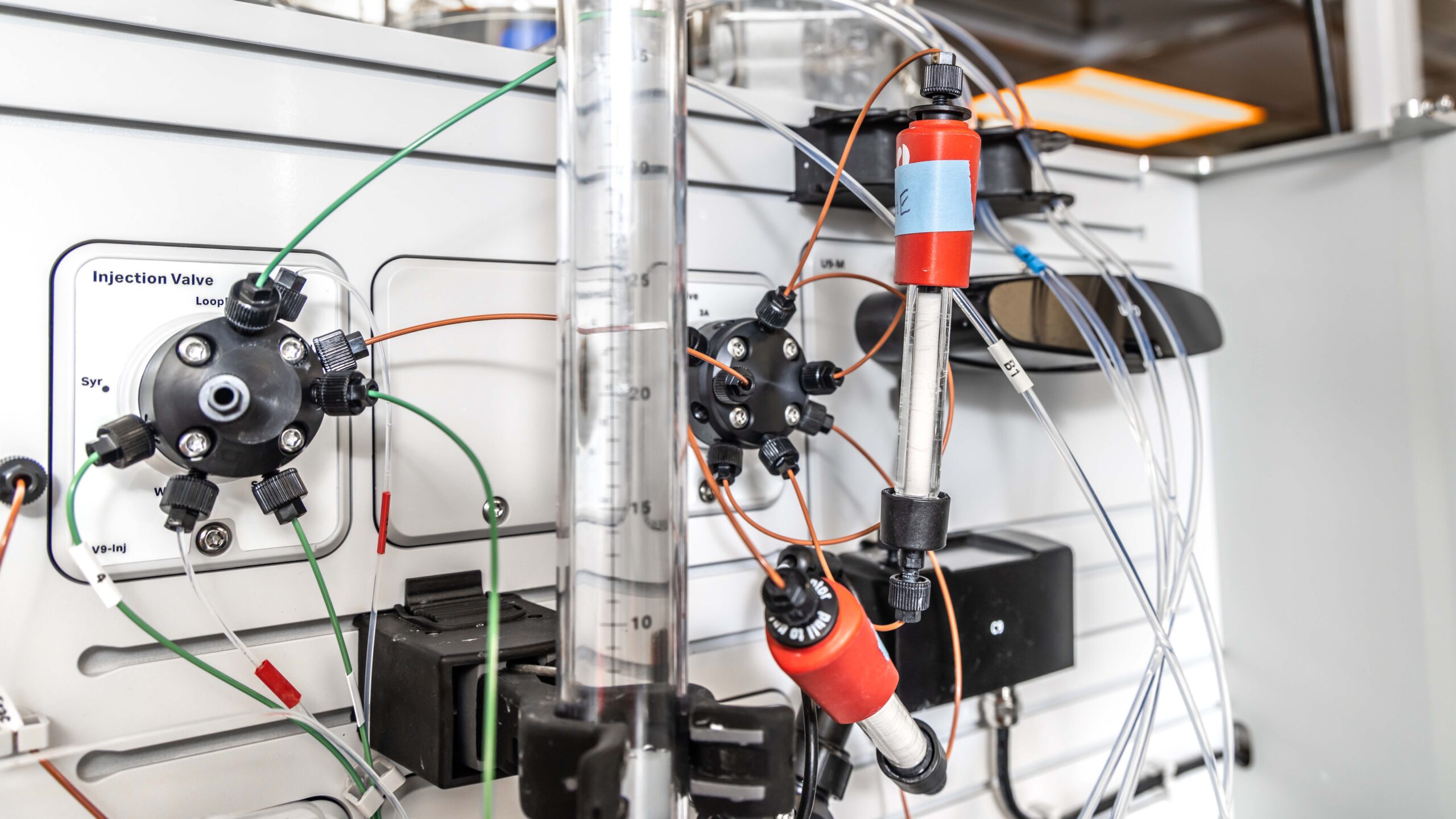Engineering a Tougher Fiber
Members of Dr. Michael Dickey’s research group and their colleagues have developed a fiber that combines the elasticity of rubber with the strength of a metal, resulting in a tougher material that could be incorporated into soft robotics, packaging materials, or next-generation textiles.
“A good way of explaining the material is to think of rubber bands and metal wires,” says Dr. Dickey, corresponding author of a paper on the work, and Alcoa Professor of Chemical and Biomolecular Engineering.
“A rubber band can stretch very far, but it doesn’t take much force to stretch it,” Dickey says. “A metal wire requires a lot of force to stretch it, but it can’t take much strain – it breaks before you can stretch it very far. Our fibers have the best of both worlds.”
The researchers created fibers consisting of a gallium metal core surrounded by an elastic polymer sheath. When the fiber is stretched, it has the strength of the metal core. But when the metal breaks, the fiber doesn’t break – it continues to slowly stretch. This response is similar to the way human tissue holds together broken bones.

“Every time the metal core breaks it dissipates energy, allowing the fiber to continue to absorb energy as it elongates,” Dickey says. “Instead of snapping in two when stretched, it can stretch up to seven times its original length before failure, while causing many additional breaks in the wire along the way.
“To think of it another way, the fiber won’t snap and drop a heavy weight. Instead, by releasing energy repeatedly through internal breaks, the fiber lowers the weight slowly and steadily.”
In materials, toughness is a material’s ability to absorb energy and deform without breaking. You can think of it as the amount of force a material can absorb as it is deformed over a distance. The new fiber is far tougher than either the metal wire or the polymer sheath on its own.
“There’s a lot of interest in engineering materials to mimic the toughness of skin – and we have developed a fiber that has surpassed the toughness of skin yet is still elastic like skin,” Dickey says.
In addition, the gallium core is conductive – though it loses its conductivity when the internal core breaks. The fibers can also be reused by melting the metal cores back together.
“We used gallium for this proof of concept work, but the fibers could be tuned to alter their mechanical properties, or to retain functionality at higher temperatures, by using different materials in the core and shell,” Dickey says.
“This is only a proof of concept, but it holds a lot of potential. We are interested to see how these fibers could be used in soft robotics or when woven into textiles for various applications.”
The new fiber was one of four “discoveries” that were highlighted in a recent episode of “4 Awesome Discoveries You Probably Didn’t Hear About This Week,” which is a series of short video blurbs, “on the latest discoveries you might not hear about anywhere else, all with funding from the National Science Foundation.” The blurb is part of the NSF The Science360 Video Library.
The paper, “Toughening stretchable fibers via serial fracturing of a metallic core,” appears in the open access journal Science Advances. First author is Christopher Cooper, a former CBE undergraduate. The paper was co-authored by Ishan Joshipura, Dishit Parekh and Russell Mailen, Ph.D. graduates from Dr. Dickey’s group; Dr. Victoria Miller, assistant professor of materials science and engineering; Justin Norkett, a Ph.D. student in Dr. Miller’s research group; and Dr. Jan Genzer, S. Frank & Doris Culberson Distinguished Professor of Chemical and Biomolecular Engineering.
The work was done with support from NC State’s National Science Foundation-funded Advanced Self-Powered Systems of Integrated Sensors and Technologies (ASSIST) Center. The mission of the ASSIST Center is to create self-powered wearables capable of long-term multi-modal sensing without having to replace or charge the batteries.
The original version of this article was written by Matt Shipman, Research Lead in University Communications at NC State.
- Categories:


